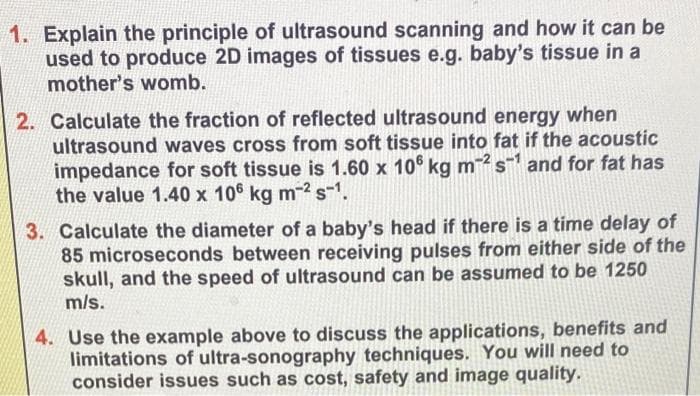1. Explain the principle of ultrasound scanning and how it can be used to produce 2D images of tissues e.g. baby's tissue in a mother's womb. 2. Calculate the fraction of reflected ultrasound energy when ultrasound waves cross from soft tissue into fat if the acoustic impedance for soft tissue is 1.60 x 106 kg m² s and for fat has the value 1.40 x 106 kg m-² s-1.
Properties of sound
A sound wave is a mechanical wave (or mechanical vibration) that transit through media such as gas (air), liquid (water), and solid (wood).
Quality Of Sound
A sound or a sound wave is defined as the energy produced due to the vibrations of particles in a medium. When any medium produces a disturbance or vibrations, it causes a movement in the air particles which produces sound waves. Molecules in the air vibrate about a certain average position and create compressions and rarefactions. This is called pitch which is defined as the frequency of sound. The frequency is defined as the number of oscillations in pressure per second.
Categories of Sound Wave
People perceive sound in different ways, like a medico student takes sound as vibration produced by objects reaching the human eardrum. A physicist perceives sound as vibration produced by an object, which produces disturbances in nearby air molecules that travel further. Both of them describe it as vibration generated by an object, the difference is one talks about how it is received and other deals with how it travels and propagates across various mediums.
Do q1 and 2

Step by step
Solved in 6 steps with 1 images







